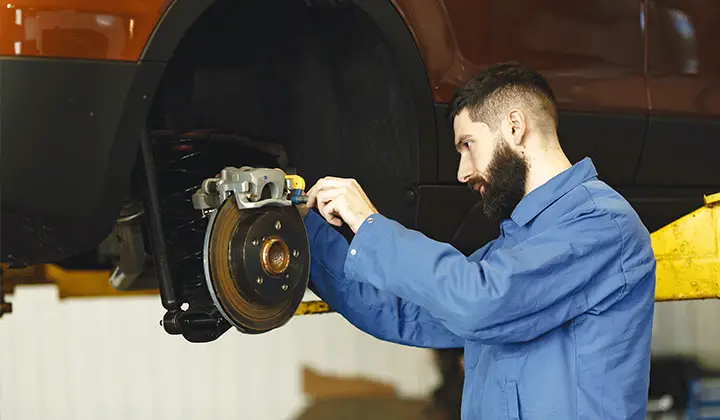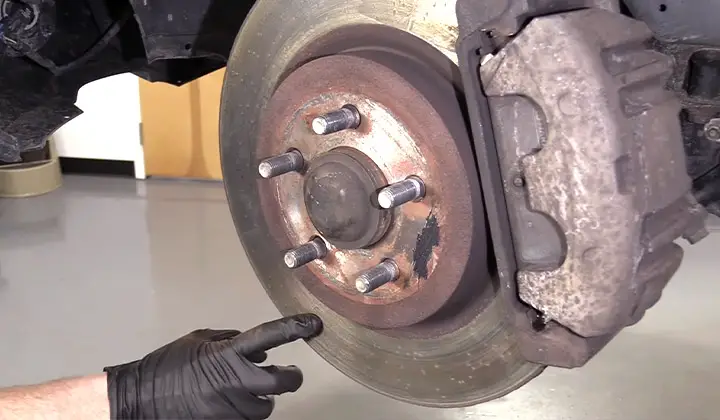When your brake rotors become worn, they can cause significant problems with braking and even lead to a car accident. A balanced rotor is essential for safe driving and should be checked regularly by your mechanic or auto technician.
There are several ways to balance the rotor without having it replaced: using weights, adjusting the caliper spacers, or balancing the pads themselves.
It’s important to experiment until you find a technique that works best for you so that you don’t have any surprises during an emergency stop in traffic.
When your brake rotors become worn, they can cause significant problems with braking and even lead to a car accident.
A balanced rotor is essential for safe driving and should be checked regularly by your mechanic or auto technician.
Contents
How to Balance Brake Rotors
There are several ways to balance the rotor without having it replaced: using weights, adjusting the caliper spacers, or balancing the pads themselves.
It’s important to experiment until you find a technique that works best for you so that you don’t have any surprises during an emergency stop in traffic.

By following these tips, you can ensure that your brakes will be balanced and work properly – both now and down the road – no matter what happens with your rotors:
If you notice that your car has a harder time stopping on the road, it may be time to have the brake rotors balanced.
A balance will ensure that each rotor is working at its best and reduces the chance of skidding or locking up in an emergency stop.
Vibration Analysis
To ensure that your brakes are functioning properly, it is important to perform vibration analysis. This will help you identify any areas of the brake system which may be causing vibrations and therefore need attention.
Radial and Axial Readings
Once you have identified the areas where vibrations are occurring, it is then necessary to take radial and axial readings in those locations. These readings will give you an idea of whether or not the rotor is at its ideal weight and position.
Ensure rotor is clean
One of the best ways to reduce vibration levels is by ensuring that your rotors are clean. If they are not free from dust, debris, or grease buildup, this can significantly contribute to overall engine performance issues such as increased emissions and poor fuel economy.
Verify There Are No Loose Parts on the Rotor
It is important to make sure that there are no loose parts on the rotor before you balance it. This includes making sure that all bolts and screws are tightened properly, as well as checking for any missing or damaged parts.
Check the Total Indicated Runout
Once you have verified that there are no loose parts on the rotor, it’s time to check its total indicated runout (TIR).
TIR is a measure of how far each tooth has traveled from its original position on the rotors. It can be used to identify any worn or misaligned rotors and correct them accordingly.
Remove Previous Balance Correction Weights
In order to accurately balance your brakes, you’ll need to remove previous weight correction weights – this will allow you to achieve an accurate reading of how much resistance your brake pads are applying when braking.
Select a Proper Trial Weight
There are a few different factors you need to consider when selecting your trial weight, including the vehicle’s weight, its speed, and how hard it brakes. You should also use an accurate scale to measure the weight of each wheel individually.
Causes That Are Responsible for Rotor Imbalance
If you’re noticing that your car is pulling to the left or right when you brake, it may be time to balance your brake rotor.
This procedure will help ensure that your brakes are working as they should and won’t become imbalanced over time.
Blowholes in Cast Parts
When rotors are cast, they may contain small holes that allow air to escape and cause rotor imbalance. This issue is most commonly seen with cast-iron rotors, which can become blowholes due to the heat of the forging process.
Eccentricity
Rotor balance is based on the principle of conservation of angular momentum – or how much rotation each rotor should have relative to the others.
If one rotor has more eccentricity than the other, it will experience a greater amount of torque applied to it and will start to wear prematurely.
Improper Key Length
A key length that’s too short can also contribute to rotor imbalance because it causes excessive flexing in the shaft during operation which can cause internal damage over time.
In addition, incorrect key lengths often result in improper alignment between mating surfaces on both rotors and hub bearings, which further increases torque loads on these components and increases their susceptibility to failure over time.
Stress Relief Distortion
Brake rotors are designed to dissipate the heat that is generated by braking. However, if there is too much stress on the rotor, it may experience relief distortion which will cause an imbalance between the brake pads and rotor.
This issue can lead to decreased stopping power and increased wear on your brakes.
Thermal Distortion
The temperature of a material affects its ability to resist deformation or change in shape due to pressure or stress. The hotter a material gets, the more likely it is to distort under pressure or strain.
Brake rotors are susceptible to thermal distortion because they get very hot during braking events.
Corrosion
Rotor imbalances can also be caused by corrosion of the metal components of your brake system including the rotor, calipers, and brackets.
Constant exposure to moisture and corrosive elements can weaken these parts over time, leading them to deform under pressure or strain from braking events
Deposit Buildup
Over time, brake rotor deposits can build up and cause rotor imbalance. This condition is most common when brakes are not properly maintained or if they are abused. Brake pads will also create a lot of residues over time, which can lead to similar problems.
Assembly Errors
When the rotors are installed on the car, there may be some errors that occur during assembly that can result in an uneven balance between the front and rear rotors. These mistakes could include incorrect alignment or mismatched parts.
Rotor Damage
If your vehicle has been involved in a serious accident, it’s likely that one or more of its rotors will have been damaged in the process. This damage can cause instability in the braking system and ultimately lead to rotor imbalance issues down the road.

Repair Work Errors
There are a number of factors that can lead to errors during repair work, such as inaccurate measurements or improper use of tools. This can cause rotor imbalance in your vehicle.
FAQs
How Much Does It Cost to Balance Your Rotors?
Though the cost depends on how many hours you have invested in the maintenance process typically it can range from $15 to $25 for each rotor.
How Do You Align Rotors?
In order to align the rotor, you will need to use different tools like dial indicators, venires calipers, and spirit levels.
Why Is My Rotor Rubbing?
If your rotor is rubbing, it means that the bearings have become worn down or the rotor is not secured properly.
Can Cold Weather Cause Brakes to Grind?
A grinding sound may occur when the brake pads are in too close contact with the rotors and they are wearing down.
Why Does It Sound Like Metal Scraping When I Drive?
The sound of metal scraping can be heard when you drive your car at high speeds or when you are driving on a rough road surface.
The sound can also be heard when you are driving in a tunnel or on a bridge with sharp turns or curves in it.
Conclusion
When balancing brake rotors, it is important to take into consideration the weight of the vehicle, as well as its speed and braking capacity.
You can use a scale to accurately measure the weight of your car and determine how much rotor balance you need to achieve optimal stopping power.
However, the importance of having balanced brake rotors cannot be overstated – improper rotor balance can lead to decreased stopping power, uneven wear on pads or rotors, and even damage to your car’s suspension system.
Always consult with a qualified mechanic before making any changes or adjustments to your car’s braking systems – they know exactly which tools are necessary in order for you to safely restore optimal performance.
